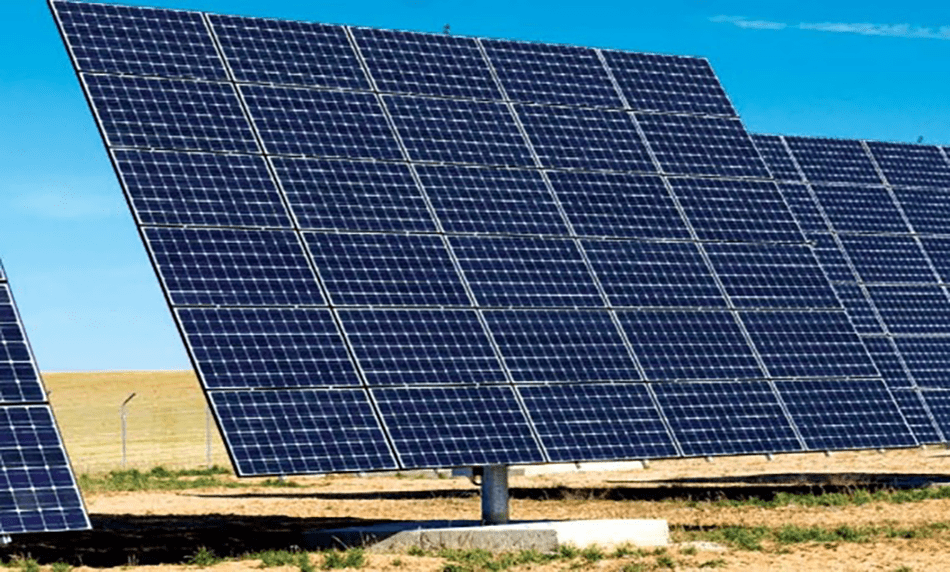

Key Learning Goals - Science:
3.3 Be able to gather evidence about energy from a variety of sources
3.4 Be able to discriminate between evidence and opinion about energy
3.5 Understand the importance of using evidence to test scientific ideas about energy and climate change
3.6 Understand some of the effects of different energy sources on the environment
3.31 Know the distinctive properties of different materials related to waste production and disposal
3.65 Know about the major sources of energy
3.66 Know how energy sources occur
3.67 Know how energy sources are obtained
3.68 Know how energy sources are used
3.69 Know the basic principles of renewable and sustainable energy
Key Learning Goals - Geography:
3.14 Be able to collect and record evidence to answer geographical questions about climate change and waste materials
3.15 Be able to identify geographical patterns and to use their knowledge and understanding to explain them
3.20 Be able to use and interpret globes and maps in a variety of scales
Temperatures are rising to unprecedented levels all across the planet. In this BrainPOP movie, Tim and Moby explain how naturally occurring greenhouse gases in our atmosphere once helped transform Earth into a temperate and pleasant place. But as human civilization evolved our reliance on industry, manufacturing and large-scale agriculture has thrown this greenhouse effect out of whack. We’re burning more fossil fuels and generating more heat-trapping gasses, like carbon dioxide and methane, than our planet can process. That’s causing global warming on a scale we’ve never seen before. But the trouble isn’t just about temperatures. Climate change is leading to rising sea levels, water shortages, and more erratic, extreme weather conditions
In this BrainPOP movie, Tim and Moby teach you all about the invisible gas that supports life on Earth. You’ll learn what the major gases of the atmosphere are, and how our atmosphere is divided into different layers. Take a ride to the top to see just how many layers there are, and what makes each one unique. Watch and learn what the layer down at the surface of the planet is called. Discover where ozone is located, and how it helps protect life down below! Finally, if you didn’t already know, Tim will tell you the truth about why the sky is blue!
In this BrainPOP movie, Tim and Moby introduce you to fossil fuel energy sources — like natural gas, coal, and oil. You’ll learn how fossil fuels form and what we use these important resources for. Find out about how plants and animals from millions of years ago helped create today's fossil fuels today.
In this BrainPOP movie, Tim and Moby shine some light on the topic of the greenhouse effect. First, you’ll discover what the greenhouse effect is, including how gases in Earth’s atmosphere act like a giant greenhouse to create the effect on a global scale. You’ll also learn why the greenhouse effect is important to keeping us alive on Earth!
Tim and Moby will give you some concrete suggestions about how you can do your part. First, you’ll learn why protecting the environment is such an important thing--and how it got to be so vulnerable in the first place. Next, you’ll find out how everyday things we consume affect our environment on a large scale! Finally, you’ll learn three major ways in which you can help clean up the planet and protect it for future generations.
From the air we breathe to the timber we use for shelter to the minerals we refine into metals, life just wouldn’t be livable without our natural resources. But what are the consequences of overuse? Join Tim and Moby in this BrainPOP movie as they look into these valuable commodities: what defines them, where they come from, and how we put them to use. You’ll find out about the difference between renewable and nonrenewable resources, and why we need to conserve both!
In this BrainPOP movie, Tim explains everything you need to know about this rare but important gas. He’ll show you what ozone is made of, and why the ozone layer is so important. You’ll learn how the activities of humans have been harming the layer, and what could happen to people and the planet without it.
Whatever the weather’s doing, you can find out why it’s doing it in this BrainPOP movie! In it, Tim and Moby explain what weather is and how different types of weather form. You’ll find out what the engine for all weather is (it has something to do with water).
See more relevant resources on BrainPop
Visit the Kielder observatory to find out about our solar system, the movements of the Earth and Moon and how their orbits give us days, nights and seasons.
A collection filled with ideas for class projects and 'green' research. Explore the environment through themes such as 'going green', 'recycling' and 'water and energy’.
Interactive natural disasters map
Find out about the effects of earthquakes, volcanoes, coastal erosion, floods, hurricanes and tornadoes, and learn the locations of countries affected by these events.
Find out about different satellites, the jobs they do and how they influence our daily lives.
An award-winning module designed to help improve our environment. It contains an archive of connected stories from the news, and ideas that can be developed into unique projects.
Sustainability – School Survey
Following on from Sustainability, the survey tools included in this module can be used to assess your school and compare it with others.
See more relevant resources on Discovery Education
https://central.espresso.co.uk/espresso/modules/subject/index.html?subject=862674&grade=ks2&&source=espresso-home-keystage2subjects
Junkyard – Reversible & Irreversible
Decide whether the change of state in a material is reversible or irreversible. Explain that some changes result in the formation of new materials, and that this kind of change is not usually reversible, including changes associated with burning and the action of acid on bicarbonate of soda.
Junkyard – Material Properties
Identify objects in terms of their properties e.g. flexible / rigid. Compare and group together everyday materials on the basis of their properties, including their hardness, solubility, transparency, conductivity (electrical and thermal), and response to magnets.
Junkyard – Identifying Properties
Compare materials in terms of a specified property. Compare and group together everyday materials on the basis of their properties, including their hardness, solubility, transparency, conductivity (electrical and thermal), and response to magnets.
www.foe.co.uk/learning/index.html
Friends of the Earth website, providing tips on how to make your school ‘greener’.
http://energyquest.ca.gov/story/index.html
Energy Quest – a colourful and engaging website for children, with facts and videos.
www.ehow.com/about_4829635_animals-affected-global-warming.html
eHow article raising awareness of animals affected by global warming.
www.climatechoices.org.uk/pages/activities0.htm
Climate Choices – Children’s Voices is an excellent resource, focusing on the critical issues that surround climate change and global warming.
Recycle Zone is a colourful and accessible children’s resource, developed by Waste Watch, a UK environmental charity.
www.olliesworld.com/uk/html/recycle.html
Ollie Recycles contains facts, figures and quizzes on all the materials that can be recycled.
www.recycleworks.org/kids/recycling.html
Recycle Works provides information on how different materials are recycled.
http://news.bbc.co.uk/cbbcnews/hi/newsid_3540000/ newsid_3546300/3546395.stm
BBC news feature, featuring facts and an interactive quiz on deforestation and the Amazon rainforest.
www.idahoforests.org/wood_you.htm
The Idaho Forest Products Commission provide an informative website, teaching us all about the products that we use that are made from trees.
www.tooter4kids.com/classroom/earth_day_poems.htm
Tooter4kids provides a collection of teacher resources, including nine poems written to celebrate Earth Day.
www.science.org.au/nova/082/082key.htm
Nova is an Australian website, focusing on key science stories. Visit this link to find information on rising sea levels and its impact on the environment.
www.scholastic.co.uk/eco-island
Eco-island – a collection of creative hands-on activities with an eco-theme.
http://library.thinkquest.org/CR0215471/acid_rain.htm
ThinkQuest is a website packed with useful information, including this feature on acid rain and its impact on the environment.
Breathing Earth is a real-time virtual simulation, showing the CO2 emissions from every country in the world.
www.sweden.se/upload/Sweden_se/english/publications/SI/Facing the future/Hammarby-sjostad.jpg
Sweden.se is Sweden’s official website and features this excellent panoramic image of an eco-town.
www.sincerelysustainable.com/buildings/its-confirmed-eco-towns-arecoming-to-england
Sincerely Sustainable provides background information on eco-town planning in England.
London 2012 – the official site of the London Olympic Games.
www.climatechoices.org.uk/pages/activities0.htm
Climate Choices – Children’s Voices has fact sheets on how climate change is affecting a number of countries, including Bangladesh, Nepal, Peru and Zimbabwe.
www.warrinerprimaries.com/Topic/improvingenvironment.htm
The Warriner Partnership website provides a useful collection of links to websites, activities and education resources.
www.youtube.com/watch?v=E1cyUmx5htA&feature=channel
YouTube documentary, highlighting the dangers faced by polar bears due to global warming.
www.youtube.com/watch?v=sCdeNfKwaPs
YouTube documentary, showing how the arctic fox is affected by climate change.
www.youtube.com/watch?v=mrf-cHyE0lE&feature=related
YouTube animation showing the carbon cycle.
www.sciencemuseum.org.uk/on-line/energy/site/EIZInfogr9.asp
The Science Museum, London, shows how the burning of fossil fuels add to the greenhouse effect.
www.youtube.com/watch?v=SeXG8K5_UvU
YouTube video explaining how a coal station produces energy.
www.youtube.com/watch?v=9dFCiKFcT7s
YouTube documentary reporting on climate change in the Maldives.
www.youtube.com/watch?v=msKaIGN4ZJo
YouTube diary detailing how India is affected by climate change.
www.youtube.com/watch?v=srpVMO1WbT0
YouTube news footage of monsoon floods in India.






